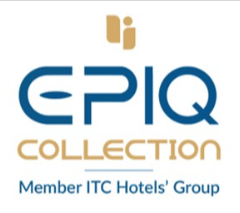Hospitality Talk gets in touch with some industry veterans to help understand how business has fared for their respective brands, what they foresee for the next quarter, and how the GST Council’s decision to levy tax on actual tariff spells for the industry.
Anupriya Bishnoi
Raj Rana
Chief Executive Officer – South Asia
Radisson Hotel Group
Q3, a review
At Radisson Hotel Group, we are committed to our five-year plan which encompasses key areas such as portfolio management, brand and product development, marketing, sales and revenue management, operations, talent, technology and scale. In India, we have done very well; our Net Promoter Scores have improved, loyalty base has grown, and we have achieved RevPAR ahead of industry average. The health of our business is also positively reflected in our growth story where we have 140 hotels in operation and under development. We have signed 11 new hotels and are on track for three more; we have opened four hotels this year and are looking forward to four more openings, maintaining our average run rate of signings and openings in a year and our goal of 200 hotels in operation and under development by 2022.
Roadblocks still exist
The last five quarters have been good for the hotel industry. Demand has grown while excess supply has been absorbed in an orderly manner. This has helped push average occupancy to almost 70 per cent after many years, however, rate has yet to strengthen. Immediately after demonetisation and the liquor ban, we saw a slowdown of construction activity of new hotels as there was a pause to take stock of the new situation. However, activity now appears to have resumed at a normal pace. New hotels are coming up, but there is certainly a need to improve efficiency and clear roadblocks such as high GST rate, visa costs, etc., that make India uncompetitive on a global level.
Looking forward to Q4
The third quarter has been positive for us, helped by an overall improvement in the hotel industry. We hope to continue the same rigour into the fourth quarter with the objective of improving performance of our operating portfolio and growing the business for greater market share.
Expanding presence to every corner
At Radisson Hotel Group, we have been on a strong growth path for several years and have explored emerging markets with much success and aplomb. Currently, we are present across 60 cities in India out of which our mid-market brands are present across 30 cities including metro cities and emerging Tier-II and III cities. We are planning to expand to destinations within a driving distance of two-three hours from primary city centres we are located in. We are also focusing on cities which have good connectivity, SEZs, are religious destinations or cultural, heritage, resort sites and hill stations.
A move in the right direction
The GST Council decision to levy tax on transaction value of hotel rooms instead of published rates has brought a positive momentum to the Indian hospitality industry. This revision has brought clarity and transparency, which is a win-win situation for all including our customers. Tier-II and Tier-III cities in India have largely been protected under GST, which is where a lot of domestic travel takes place. However, the tax rate is still on the higher side when compared to most neighbouring countries.
Arpit Pant
Regional Director – South Asia & Middle East
Preferred Hotels & Resorts
Q3, a review
We had a good start to the year and our member hotels have shown a 28 per cent year-on-year growth in revenue through bookings from Preferred Hotels & Resorts’ channels. We have welcomed three new hotel members – JA Manafaru (from the Maldives), Mosaic Hotels (from Mussoorie), and Gokulam Grand Hotel & Spa (from Bengaluru). The Preferred Residence model, which was one of our key development goals for this year, has seen two new members – The Leela Ambience Gurugram Hotel & Residences, alongside JA Manafaru.
An ideal market for hotels
India is the world’s only trillion-dollar economy to rank amongst the world’s top five fastest growing economies. Travel and tourism, one of the fastest growing sectors, is a major contributor to the Indian economy. Referencing the Ministry of Tourism, 2017 witnessed the highest ever foreign tourist arrivals in the country at 10.04 million, a growth of over 14 per cent over 2016. These are all positive signs. The Indian hotel segment has seen an influx of international brands marking their presence. Whilst the independent hotel space still has scope to mature and come forward, Preferred Hotels & Resorts has curated an incredible collection of heritage as well as contemporary properties in India that are able to compete internationally and establish their presence as iconic independent hotels.
Looking forward to Q4
We expect the fourth quarter to be positive and anticipate further growth. Preferred Hotels & Resorts is currently in discussions with existing and new partners, and looks forward to sharing some exciting announcements before the close of the year.
Tier-II and III on the rise
The healthy competition scenario amongst various state governments to attract investments and as well as the Central Government’s initiatives like developing SMART cities and UDAN scheme to improve regional air connectivity will strongly facilitate the rise of Tier-II and Tier-III cities within India. We have already added hotels in Jaipur, Nashik, Coimbatore and Vadodara, which is a testament of this growth.
A welcome change
A positive amendment to the initiative has been that the GST percentage is now applied on rate charged as opposed to the rack rate that was in the initial model. The industry has been very receptive to this change.
Sonica Malhotra
Joint Managing Director
MBD Group
Q3, a review
Radisson Blu MBD Hotel Noida witnessed a nine per cent increase in number of rooms sold and a seven per cent higher ARR. RevPAR also rose and was 16 per cent higher than the third quarter in 2017. On the other hand, Radisson Blu Hotel MBD Ludhiana witnessed a 10 per cent rise in number of rooms sold and a three per cent higher ARR. RevPAR for this hotel was at least 13 per cent higher than the third quarter of the previous year.
Lower booking pace
To begin with, booking pace was lower as compared to last year, impacting our future strategies for the month. With an increase in booking options/channels, customers tend to keep their reservations open and finalise the same only closer to the stay/arrival day. This change in buying behaviour affects projection of business on books for the future days and makes it difficult for us to strategise, leading to a more competitive environment. In Noida, during the summer season, there aren’t many takers of higher category rooms, making higher ARRs a bit challenging.
Looking forward to Q4
The fourth quarter looks promising and buoyant. We anticipate increased demand in Noida due to international exhibitions and conventions at the India Expo Mart during this quarter.
Upcoming markets
The emerging source markets for us are Romania, Malaysia, New Zealand, China, and Singapore. Expansion projects of leading ITES companies in Noida and new industries and companies investing in Greater Noida will add to our business share.
GST and its amendments
Post GST, we were at an advantage due to easy and better utilisation of Input Tax Credit (ITC). Also, the final cost to the end-user has come down, leading to an increase in the number of inbound travellers. We have also seen companies with lower budgets shifting their business to hotels under the 18 per cent tax category. This has helped us filter and acquire higher capacity accounts/companies for our hotels. That said, GST does have a slight technological burden and the cost of compliance has also grown.








